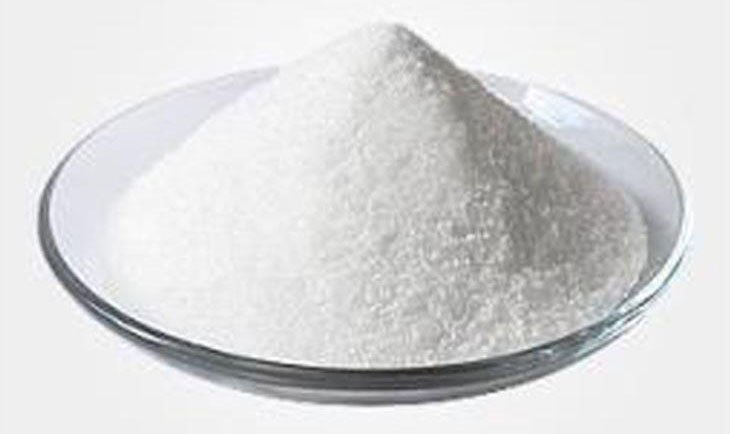Global Dextrose Anhydrous Market Growth: Size, Share, Key Benefits, Industry Developments, and Market Outlook 2024-2032
Global Dextrose Anhydrous Market Growth: Size, Share, Key Benefits, Industry Developments, and Market Outlook 2024-2032

The global dextrose anhydrous market share is experiencing steady growth, driven by the increasing demand for sweeteners across food and beverage, pharmaceutical, and other industries. Dextrose anhydrous, a simple sugar derived from corn starch, plays a vital role as a natural sweetener, bulking agent, and preservative. The overall dextrose market is projected to grow at a CAGR of 3% between 2024 and 2032, and the dextrose anhydrous market is benefiting from this upward trend. Its applications in multiple sectors, including food, beverages, and pharmaceuticals, contribute significantly to market growth.
Key Benefits of Dextrose Anhydrous
Dextrose anhydrous offers various benefits that drive its widespread use across industries. One of the key advantages is its high solubility, making it an ideal sweetener in food and beverage applications where it provides sweetness without altering the flavor profile. It also acts as a natural bulking agent and helps in the browning process of baked goods, improving texture and taste. In the pharmaceutical industry, dextrose anhydrous serves as a carrier for active ingredients, making it a key component in tablets and other oral medications. Its fast absorption rate is another benefit, especially in medical and sports nutrition products that require rapid energy replenishment.
Key Industry Developments
Recent developments in the dextrose anhydrous market have been driven by innovations in production processes and expanding applications.
- Cargill has invested in expanding its corn refining and processing capacity to meet the growing demand for dextrose and other starch derivatives.
- Roquette Frères introduced a new range of dextrose products tailored for the pharmaceutical industry, offering enhanced purity and performance.
- Tate & Lyle has focused on sustainable sourcing practices for corn starch, positioning its dextrose products as environmentally friendly solutions for the food and beverage sector. These developments underscore the ongoing growth in the dextrose anhydrous market, particularly in terms of expanding production capacity and meeting the needs of diverse industries.
Driving Factors of Market Growth
Several key factors are driving the growth of the global dextrose anhydrous market:
- Growing Demand for Sweeteners: The food and beverage industry is witnessing an increased demand for natural sweeteners as consumers seek healthier alternatives to artificial sugars. Dextrose anhydrous, being a natural and easily digestible sweetener, is gaining popularity.
- Pharmaceutical Applications: The pharmaceutical industry’s reliance on dextrose anhydrous as a carrier in tablets and oral solutions is expanding, particularly in response to the rising need for fast-acting energy supplements and intravenous solutions.
- Rising Health Awareness: As more consumers focus on health and wellness, dextrose anhydrous is being incorporated into energy drinks and nutrition products due to its quick absorption and energy-boosting properties. It is also increasingly used in low-fat and low-sugar products.
- Growing Food Processing Industry: With the expansion of the global food processing sector, the demand for dextrose anhydrous as a bulking agent and preservative continues to rise. Its role in enhancing the shelf life and texture of food products makes it essential in processed foods.
Impact of COVID-19 on the Dextrose Anhydrous Market
The COVID-19 pandemic had a mixed impact on the dextrose anhydrous market. On one hand, the disruption of global supply chains initially slowed production and distribution, particularly in the food and beverage sector. On the other hand, the pandemic increased consumer demand for health supplements and energy-boosting products, leading to a rise in pharmaceutical and nutritional applications of dextrose anhydrous. Additionally, as the food industry recovered, the demand for sweeteners in processed foods and beverages rebounded, further aiding market growth. Overall, the market has demonstrated resilience and is expected to recover fully as the global economy stabilizes.
Restraining Factors
While the dextrose anhydrous market has strong growth potential, certain factors may hinder its expansion:
- Health Concerns Over Sugar Consumption: Growing concerns over sugar-related health issues, such as obesity and diabetes, may limit the use of dextrose anhydrous in certain food and beverage products. This has led some manufacturers to explore alternatives to traditional sweeteners.
- Fluctuating Raw Material Prices: The cost of corn, which is the primary raw material for producing dextrose anhydrous, can fluctuate due to factors such as climate change, geopolitical tensions, and trade policies. These price variations may affect profit margins for manufacturers.
- Regulatory Challenges: Different regions have varying regulations regarding food additives and sweeteners, which can create hurdles for manufacturers in terms of compliance and market entry.
Market Segmentation
The global dextrose anhydrous market can be segmented based on application, end-use industry, and region.
- By Application:
- Sweeteners
- Bulking Agent
- Preservative
- Pharmaceutical Carrier
- By End-Use Industry:
- Food and Beverage
- Pharmaceuticals
- Nutraceuticals
- Cosmetics
- By Region:
- North America
- Europe
- Asia-Pacific
- Latin America
- Middle East & Africa
Market Outlook
The outlook for the global dextrose anhydrous market remains positive, with steady growth expected across key industries. The food and beverage industry will continue to be a major driver, particularly with the rising demand for natural sweeteners and processed foods. The pharmaceutical sector is also expected to see strong demand for dextrose anhydrous, especially as it is used in energy supplements, intravenous solutions, and drug delivery systems. Additionally, the Asia-Pacific region, with its expanding food processing industry and growing pharmaceutical sector, is poised to emerge as a key market for dextrose anhydrous.
Market Overview and Trends
Several trends are shaping the future of the dextrose anhydrous market. One major trend is the rising focus on sustainable sourcing and eco-friendly production processes. Consumers are becoming more conscious of where their food comes from and how it is produced, prompting manufacturers to adopt sustainable practices. Another trend is the increased demand for low-sugar and low-calorie products, which has driven food companies to use dextrose anhydrous as a lower-calorie alternative to traditional sweeteners. In the pharmaceutical sector, the growing demand for energy-boosting and recovery products has led to more widespread use of dextrose anhydrous in sports nutrition and medical supplements.
Industry Segmentation and Regional Insights
- North America: The North American market is a major consumer of dextrose anhydrous, driven by the demand for sweeteners in food and beverages, as well as its widespread use in the pharmaceutical industry. The region’s focus on health-conscious products is also contributing to the growth of dextrose-based products.
- Europe: Europe is expected to see steady growth, supported by the region’s strong food processing industry and the increasing demand for natural sweeteners. The pharmaceutical industry in Europe also relies on dextrose anhydrous for various applications.
- Asia-Pacific: The fastest-growing region, Asia-Pacific is experiencing rising demand for dextrose anhydrous, particularly in China and India. The region’s expanding food and beverage industry and increasing consumption of processed foods are driving growth.
- Latin America and Middle East & Africa: These regions are expected to experience moderate growth, supported by the expansion of the food processing and pharmaceutical industries.
Analysis and News
Recent news in the dextrose anhydrous market highlights a focus on sustainable production and product innovation. Leading players are investing in corn-based production with a focus on lowering environmental impact. Additionally, partnerships between food and pharmaceutical companies are emerging to develop new applications for dextrose anhydrous in health supplements and energy products.
Top Impacting Factors
- Rising Health Awareness: The increasing focus on healthy eating and low-sugar diets is driving demand for dextrose anhydrous as a natural sweetener in the food industry.
- Pharmaceutical Growth: The expanding pharmaceutical sector is boosting demand for dextrose anhydrous in medical formulations and energy supplements.
- Sustainability Initiatives: Companies are adopting eco-friendly production practices to meet consumer demand for sustainably sourced products.
Target Audience
The dextrose anhydrous market caters to:
- Food and Beverage Manufacturers
- Pharmaceutical Companies
- Nutraceutical Companies
- Sports Nutrition Brands
- Cosmetic Manufacturers
Major Key Players
- Cargill, Incorporated
- Roquette Frères
- Tate & Lyle
- ADM (Archer Daniels Midland)
- Ingredion Incorporated
- Grain Processing Corporation
Opportunities
The increasing demand for low-sugar and natural sweeteners presents significant opportunities for growth in the food and beverage sector. In addition, the expanding pharmaceutical industry in emerging markets like Asia-Pacific creates further opportunities for dextrose anhydrous manufacturers. The rise of sports nutrition and energy supplements is another area where dextrose anhydrous can thrive.
Challenges
- Health Concerns: The growing scrutiny of sugar consumption poses a challenge for dextrose anhydrous, particularly in regions where sugar taxes are being introduced.
- Price Fluctuations: The volatile cost of corn, the primary raw material for dextrose anhydrous, can affect production costs and market prices.
Scope
With applications spanning across multiple industries, the scope of dextrose anhydrous continues to expand. From natural sweeteners to pharmaceutical carriers, its versatility ensures that the market will maintain steady growth in the foreseeable future.
The global dextrose anhydrous market is set to witness sustained growth over the next decade, driven by rising demand for natural sweeteners, expanding applications in pharmaceuticals, and an increasing focus on health-conscious products. With major players investing in innovation and sustainable production, the market is poised for a bright future.


